Team Dynamics on the Front Line: How Managers and Organizations Impact This Overlooked Key to Retention
Catalyst in partnership with Accenture
Executive Summary
Frontline employees often work in high-pressure, low-resource environments where relationships with team members are crucial to performance. Whether in a commercial kitchen, on a production line, or on the sales floor, teammates need one another to smoothly serve, produce, and sell products. When things go wrong, problem-solving needs to happen in the moment, with limited opportunity to consult leadership. How colleagues show up for one another in these moments makes a difference not only in whether problems are resolved—but also in the stress level involved in resolving them.
For employees who work with one another in close quarters day in and day out, respectful and supportive team-member relationships can go a long way to making each workday more successful and creating a satisfying employee work experience.
Companies that differentiate themselves first through the essentials of pay, benefits, scheduling practices, and growth opportunities and then by investing in strong team dynamics among frontline employees may find it’s an important reason why people stay in frontline roles, or even choose a specific employer in the first place.
But companies may be overlooking the importance of team dynamics in their recruitment and retention efforts, we learned from a survey of 1,800 frontline employees in retail, hospitality, and manufacturing. The results are striking. Our data show a clear link between how employees are treated by their managers and companies and the quality of frontline team dynamics.
Catalyst research points to actions managers and organizations can take to foster the development of healthy relationships at work, including closing gender gaps between women’s and men’s experiences.1 Positive team dynamics emerge when companies treat all frontline employees fairly, encourage them to use their voices, and support their needs—and when frontline managers are trained and expected to do the same.
This report is a call to action for organizational and frontline leaders. Employers that heed this guidance stand to gain billions of dollars through improved recruitment, retention, and gender equity in their frontline workplaces—and more engaged and satisfied employees.
Read on to learn more about our findings and the actions you can take today.
Key Findings

What do we mean by “frontline jobs”?
For this report, we focus on frontline roles in three US industries: manufacturing; hospitality, which includes accommodation and food services; and retail.2 We define frontline roles as roles directly involved in production, processing, and service delivery in non-office settings that typically do not require higher-education qualifications. In these jobs, employees are required to work in person at a specific physical location (e.g., factory, hotel, restaurant, store) during shifts that may be set or variable and often include hours outside the current Monday to Friday, 9-to-5 paradigm of office work.3
Turnover Is a Multibillion-Dollar Issue. Improving Team Dynamics Can Help.
Frontline employers are in a race to attract and retain valuable talent. At the same time, many frontline employees are experiencing pressures from inflation, insecurity linked to economic and technological disruption, and the challenges of an expensive and inaccessible childcare system. After the pandemic kickstarted a paradigm shift that has raised enduring questions about the value of frontline employees, many of them have changed expectations about how they’re treated.
Companies need to meet these expectations because they are losing billions of dollars by not clearly communicating or building the frontline employee value proposition. And creating a workplace where employees want to stay can save billions—even a 10% improvement in turnover rates can save $4-7 billion in each industry.
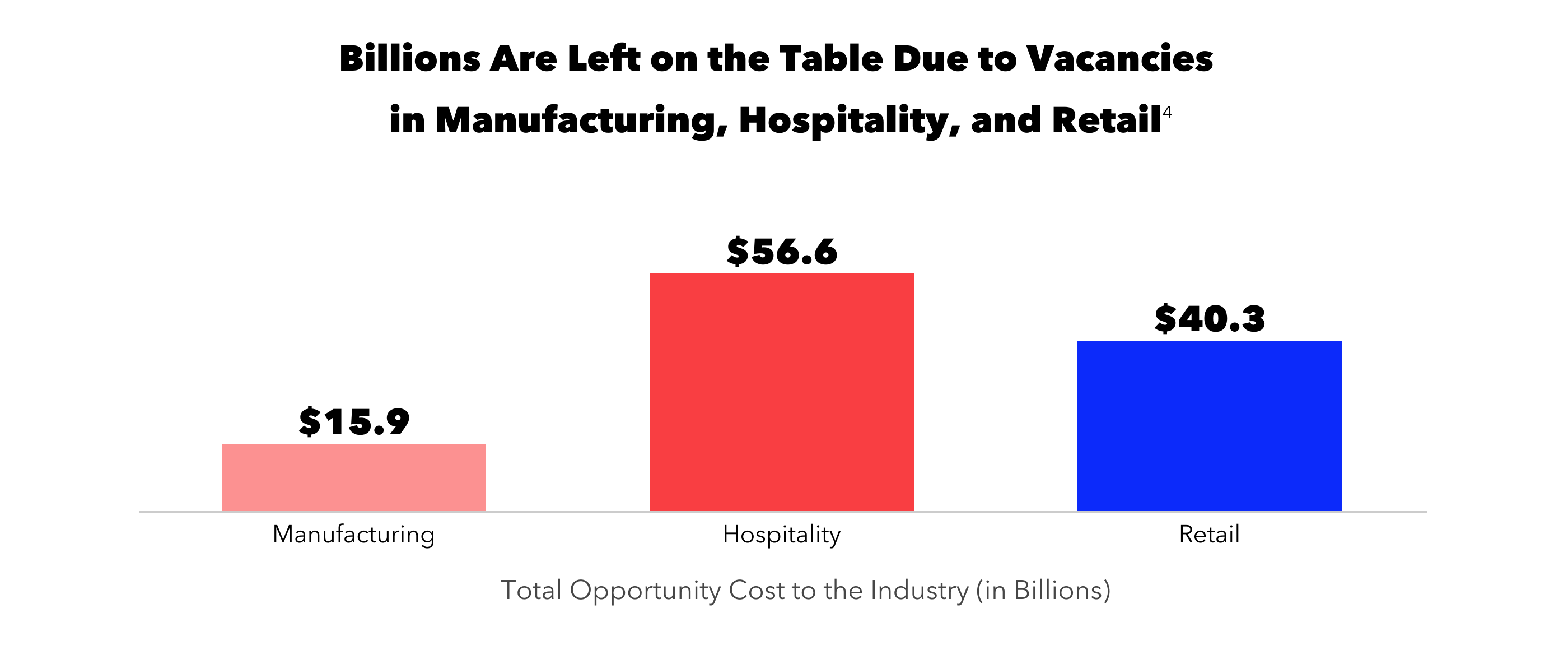
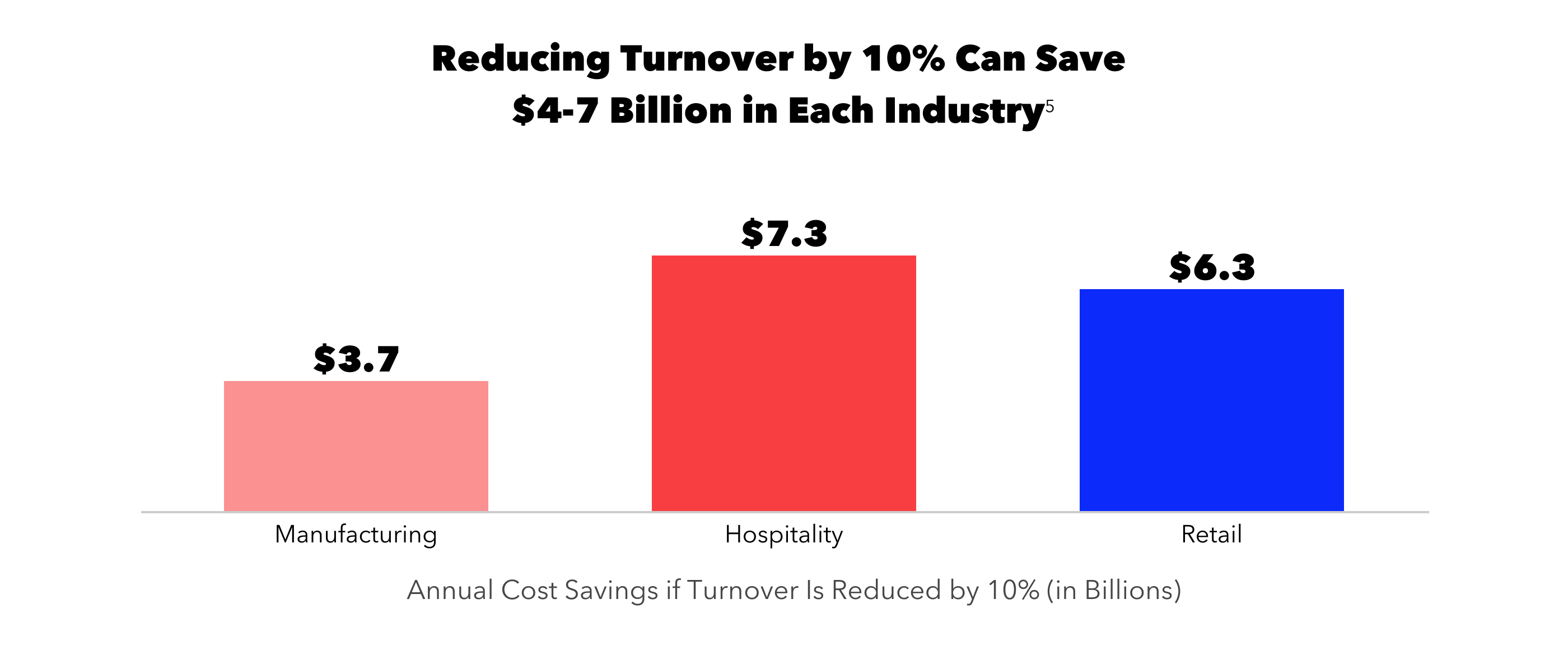
There is a lot of churn in these industries6 as well as competition for both attracting and keeping frontline talent. In hospitality and retail, where women make up a large portion of the frontline workforce,7 close attention to women’s experiences, what attracts them, and what drives them away is particularly important. In manufacturing, where women are underrepresented, a focus on women can help companies tap into a new pool of talent.
In short, it’s a business imperative to do everything possible to make the frontline workplace more appealing to potential and current employees, especially women.
Frontline Employees Are Attracted to Jobs That Prioritize Positive Team Dynamics
We know from our previous work with women in frontline jobs that part of what makes a good workplace culture is respectful, supportive, and connected teams.8 And since the macroeconomic data show that companies have an opportunity and a need to improve their recruiting efforts, we wanted to test whether the frontline labor pool takes information about the team environment into consideration during job searches.
Our survey found a clear difference in both how attracted people were to a job and how positively they viewed the organization advertising the job when a job posting included information about the company’s investment in team dynamics.9 Compared to respondents who did not receive any information about the company’s investment in working relationships, those who received the information were more likely to:
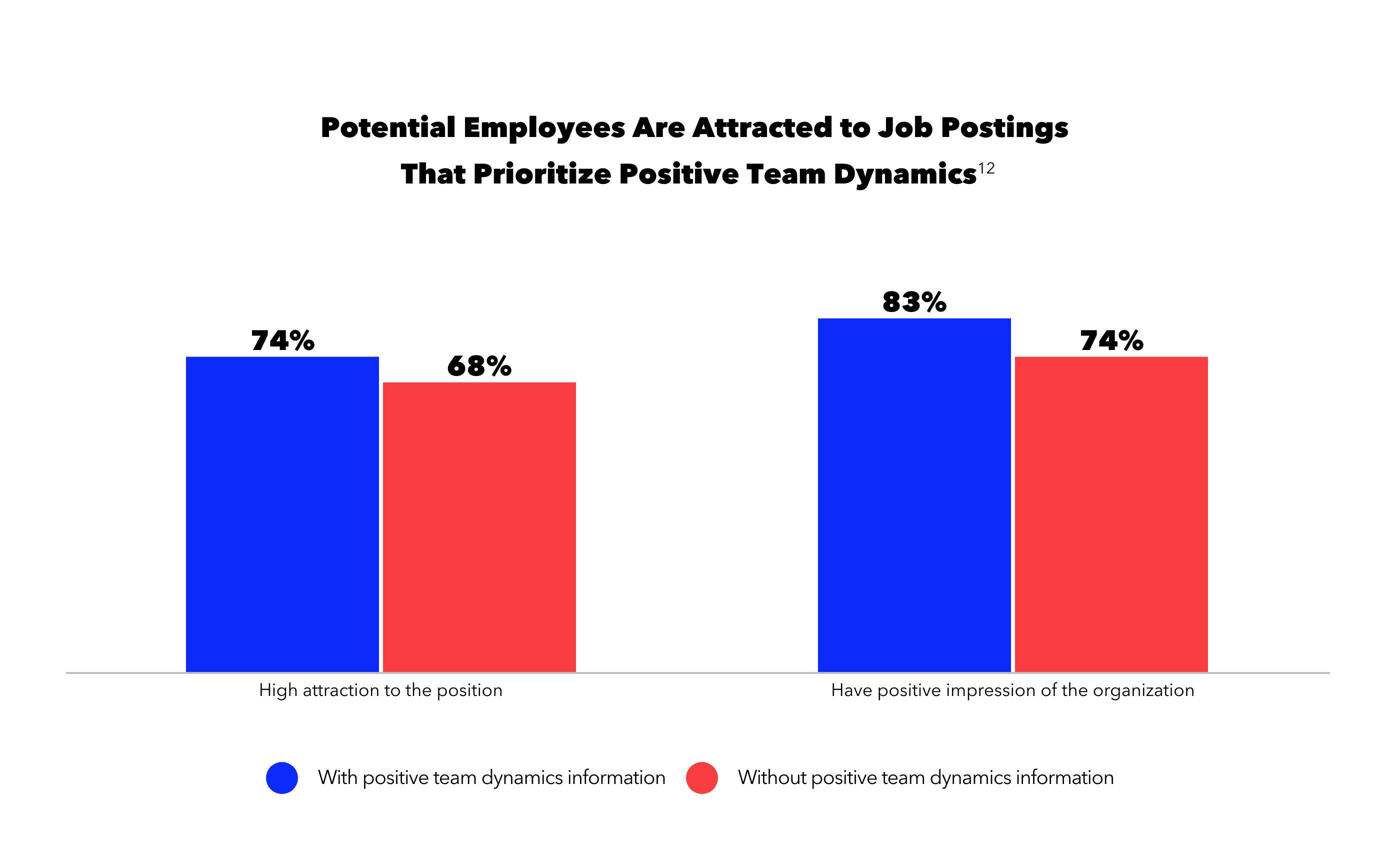
THE GENDER ANGLE
It’s Not True That Women Care More About Strong Working Relationships Than Men
Previous Catalyst research on women in frontline roles13 drove our attention to the importance of team camaraderie. Yet our data do not show significant gender differences in the level of attraction or impressions of the organization when strong relationships with coworkers are emphasized. What this tells us is that people of all genders want team camaraderie—and that organizations that understand the importance of this aspect of frontline work can see broad benefits when it comes to attracting talent.
This data also discredits common gender stereotypes about women that assume they’re more relationship-oriented than men. Indeed, wanting to feel respected, supported, and connected at work is a human trait unrelated to a person’s gender. And as we show in this report, there is a gender gap in how women experience some of the factors that contribute to strong working relationships.

TAKEAWAY
Frontline Job Postings Should Emphasize Investment in Positive Team Dynamics
Organizations that highlight their investments in building positive working relationships gain a competitive edge when recruiting frontline employees. These investments should be concrete and measurable, not just lip service. In an environment where employers are competing for talent both within and across industries, every adjustment counts.
My manager said this yesterday to our new hire, “You know, the work may be tough, but we keep coming back for our coworkers and to spend time with them and because they are so fantastic.”
—White14 woman, 29, hospitality employee
Positive Team Dynamics Boost Retention and Work Experiences
A company’s stated commitment to strong working relationships might bring employees to a company, unlocking recruitment benefits. But actually experiencing high-quality relationships is what improves workplace experiences and is key to retention for current employees.
Indeed, we found that the quality of frontline employees’ working relationships has a distinct and notable effect on various employee experiences.
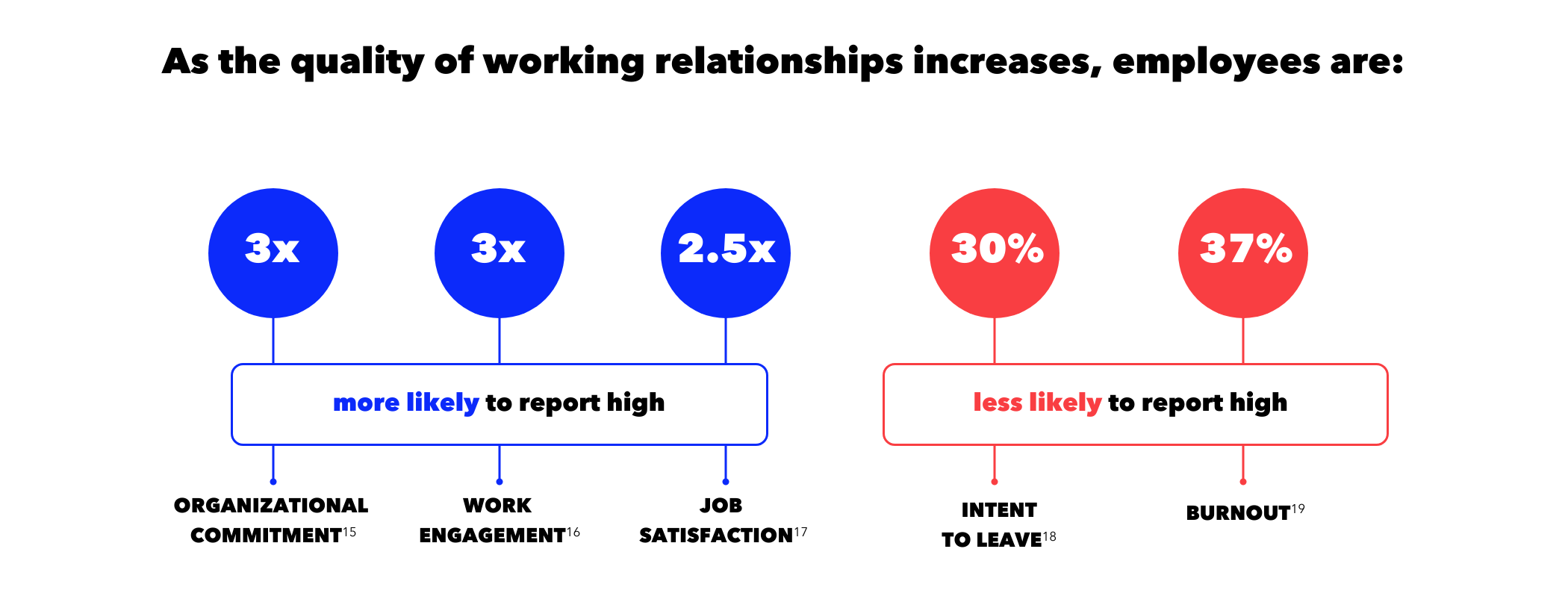
Despite the important link between positive team dynamics and employee experiences, our data show that organizations are missing opportunities to connect and build team culture among frontline employees.
- Only 17% of employees say that their organization frequently provides opportunities to connect, such as through team lunches or celebrations or chances to talk informally.
- Employees who have more opportunities to connect with coworkers are more than twice as likely to report better quality relationships with their coworkers.20
In addition, while some organizations may focus on team building for teams that work closely together, they shouldn’t forget about employees in frontline roles where there are limited opportunities for informal interactions with colleagues. For example:
- Employees in production or retail environments may work as a team, but in a physically dispersed way, at different workstations or across a store, on highly individualized tasks with few opportunities for interpersonal interaction during the workday.
- Employees in customer service roles who remain within view of customers may have limited opportunities for informal interactions with colleagues, even in instances where they’re working closely alongside one another.
- Many frontline employees do not have access to tech-enabled communication such as email and direct messaging platforms that are taken for granted as means of formal and informal communication in office-based work.

TAKEAWAY
Employers Must Do More to Strengthen Team Dynamics Because It Drives Retention and Other Positive Outcomes
We celebrate birthdays and anniversaries….We do lunches and we do cake and sometimes even we do games…to create connection between departments.
—Latine woman, 49, hospitality manager
Strong working relationships improve the overall work experience, which keeps frontline employees in their jobs. Organizations that are looking for new, evidence-based ways to retain employees should review and enhance their team-building efforts, for example, by:
- Securing budgets and providing guidelines for customizable team-building activities and recognizing personal milestones (e.g., birthdays, graduations), cultural celebrations, or team achievements.
- Investing in training and skill building—during paid hours—that focuses on respect, empathy, and both colleague and managerial interpersonal skills so team-building activities are positive experiences for everyone.
- Providing employees with regular informal opportunities to get to know one another during the workday.
- Partnering with outside community service organizations on special projects that teams can do together offsite for a day.

So far, we’ve shown that strong working relationships are important for attracting and retaining frontline employees as well as improving their work experiences. But coworker relationships aren’t just about friendships built on innate personality traits and affinity. The quality of coworker relationships is determined by the working environment, and creating opportunities for team bonding and connection building are not the only actions companies can take to unlock the benefits of good relationships among their frontline employees. Our data show that employees’ experiences with their managers and their companies as a whole have an outsized impact on team dynamics.
THE CATALYST SOLUTION for Frontline Managers
Frontline managers play a major role in keeping frontline employees in their jobs:
- Estimates suggest that frontline managers supervise as much as 80% of total employees in companies with a frontline workforce and comprise 50-60% of a company’s management.21
- Frontline employees are three times more likely to stay at their company when they have a supportive manager.22
Our findings show that frontline managers are very important in creating an environment in which team members can develop strong working relationships.23 Indeed, their performance in this area can impact the entire team.24 Since frontline managers supervise such a large portion of the workforce, their actions are key to team cohesion.
Our research identified three frontline manager actions that are vital for the development of high-quality working relationships among frontline employees.
1. Make Fair Decisions.
WHAT DOES THIS LOOK LIKE?
- When managers make fair decisions, they apply consistent standards in their treatment of team members and are impartial and unbiased in decision making.
WHY IS IT IMPORTANT?
- Manager fairness improves job satisfaction, employee performance, and engagement in helping behaviors toward coworkers.25
- Catalyst and Accenture’s previous report on women frontline employees highlighted that when employees feel that their manager does not act fairly, “has favorites,” or in other ways shows bias, it negatively influences the way that they feel about their work environment.26

WHAT DO EMPLOYEES SAY?
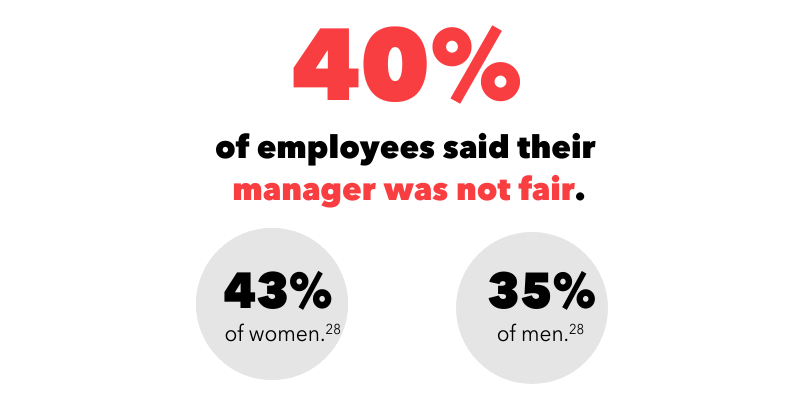
WHAT ACTIONS CAN MANAGERS TAKE?
- Be consistent and follow workplace policies when sharing important organizational information such as how employee safety concerns are handled and what growth opportunities exist.29
- Be transparent about how schedules are generated and ensure that all employees have their preferences satisfied.
- Check out Catalyst’s Supporter-only tool for managers, Moments That Matter, for scenario-based micro-learnings about favoritism and fairness.
2. Respond to Employee Needs.
WHAT DOES THIS LOOK LIKE?
- When managers respond to employee needs, they are aware of employees’ individual circumstances in relation to a range of issues, from personal needs to scheduling to performance evaluations, and they take action to address issues.

WHAT DO EMPLOYEES SAY?
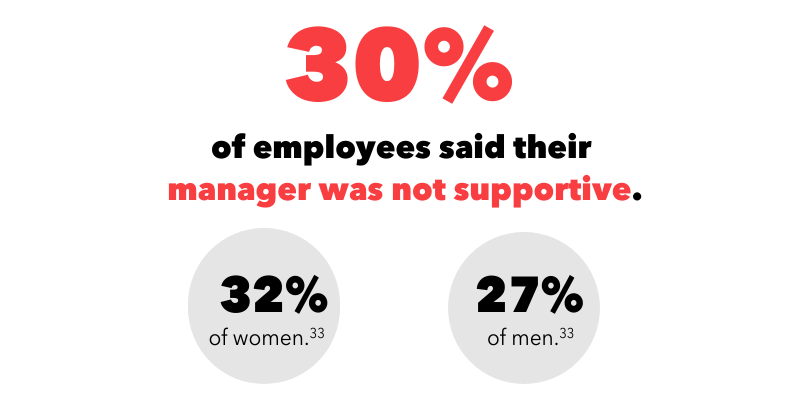
WHAT ACTIONS CAN MANAGERS TAKE?
- Approach employee requests with empathy and an open mind.34
- Make time in your schedule to have regular one-on-one conversations with all of your team members to understand their life circumstances and aspirations for growth.
- Check out Catalyst’s Supporter-only tool for managers, Moments That Matter, for scenario-based micro-learnings about sexual harassment and burnout.
3. Be Open to Employee Feedback.
WHAT DOES THIS LOOK LIKE?
- When managers are open to employee feedback, employees feel they can raise problems and concerns about the workplace with their manager and that their manager is responsive to their ideas and insights.
WHY IS IT IMPORTANT?

WHAT DO EMPLOYEES SAY?
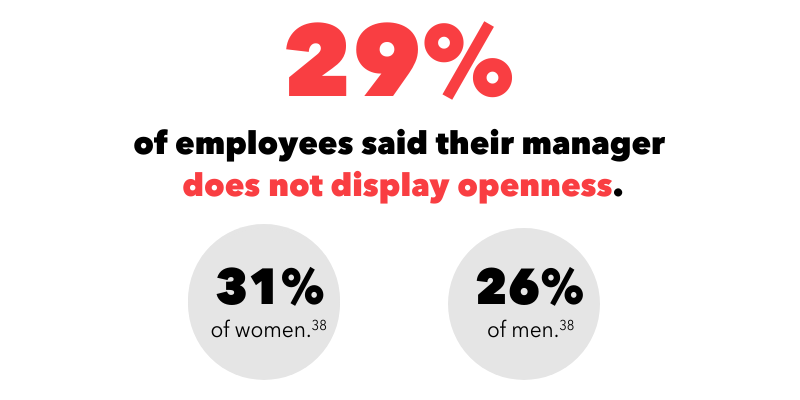
WHAT ACTIONS CAN MANAGERS TAKE?
- Create an environment where employees feel comfortable voicing their opinions, suggestions, and concerns.
- Make a point of showing when you have implemented actions based on employee feedback.
- Check out Catalyst’s Supporter-only tool for managers, Moments That Matter, for scenario-based micro-learnings about employee chatter and uniforms.
THE GENDER ANGLE
Addressing Gender Gaps in Women’s Frontline Experiences
All employees would benefit if frontline managers had more training in these three behaviors. But the differences between women employees’ and men employees’ perceptions of manager fairness and manager openness indicate an opportunity for companies to tailor trainings by, for example:
- Helping managers become attuned to the diverse experiences of women employees.
- Incorporating material on how to recognize and respond to exclusionary dynamics such as lack of fairness, silence in the face of bias and discrimination, and inequitable distribution of opportunities—whether from oneself or others, as well as in systems and processes.
- Nesting or supplementing training within diversity, equity, and inclusion initiatives.
Since women are the majority of employees in frontline roles in the hospitality industry, a substantial share of frontline employees in the retail industry,39 and a target recruitment demographic for the manufacturing industry,40 ensuring that frontline managers are responsive to women’s experiences should be a fundamental aspect of recruitment and retention initiatives across these industries.

TAKEAWAY
Frontline Managers Need More Training
Managers are already acting in ways that either build up or, too often, undermine team camaraderie. Because manager fairness, manager support, and manager openness have a large impact on working relationships among team members, which, in turn, impact employee turnover and other work experiences, there is a strong business case for upping training in these areas.
And since our data show that 29%-40% of employees say their managers are not displaying these behaviors, it’s clear that this is an opportunity that companies should not ignore. Managers’ motivation and ability to make a positive difference depends on the specific investments that companies make to provide manager training and set expectations.
And as with any expectation of managerial leadership at work, organizations should also hold managers accountable for developing and demonstrating their abilities in nurturing strong working relationships by using performance metrics that reinforce the importance of people leadership.41
Research shows that frontline managers do not receive the training they need to excel in their roles. Indeed, frontline managers want more training, and are not getting enough:
- “Teamwork and collaboration” ranked second in a list of areas that frontline managers said they want training in.42
- Only half (48%) of frontline leaders reported that they had received training on “leads teams that deliver” in the last year, compared to 76% of senior leaders.43
- Only 56% of frontline leaders had training on “develops others,” compared to 69% of senior leaders.44
My manager has his favorites, and he treats them well, and there’s a lot of people that he doesn’t treat well. And it’s very noticeable and it bothers me the way that he treats other people.
—White woman, 43, manufacturing employee

FRONTLINE MANAGERS, STRENGTHEN YOUR CONVERSATION SKILLS
Access 2 graphics you can use as posters or flyers with tips on tackling tough talks and connecting with frontline employees.
THE CATALYST SOLUTION for Organizations
In addition to manager behaviors, our research identified four organizational actions that impact the quality of working relationships among frontline employees. Indeed, it’s one thing for frontline managers to show fairness, support, and openness to their team members to encourage better team relationships, but quite another for organization-level systems, procedures, and norms to do so. And managers are more likely to carry through their actions when they know the entire organization is committed to fairness, support, and openness.
Even if organizational programs and policies are in place for supporting, hearing, and treating corporate and office-based employees fairly, it’s not a given that those programs and policies will flow down to or be relevant to the frontline experience. Thus, frontline employees and their teams are at risk of not feeling supported, valued, heard, and cared for by their organization as a whole.
Research on frontline employees in the aftermath of the Covid-19 pandemic as well as our own earlier research on frontline women’s experiences highlights the many ways frontline employees can experience a lack of systemic validation given their low level of organizational power and hierarchical distance from corporate leaders.45 Importantly, we must also note that creating a workplace where employees support and respect one another does not mean that other basic aspects of a job—such as pay, benefits, and employee-centric scheduling practices—can be subpar.
Here, our survey found that organizations that want to attract and retain frontline employees should focus on the following four actions to improve work relationships among frontline employees.
1. Implement Fair Rewards Systems.46
WHAT DOES THIS LOOK LIKE?
- Employees find the rewards they receive from their employer fair, considering their performance, contributions, and efforts.47

WHAT DO EMPLOYEES SAY?
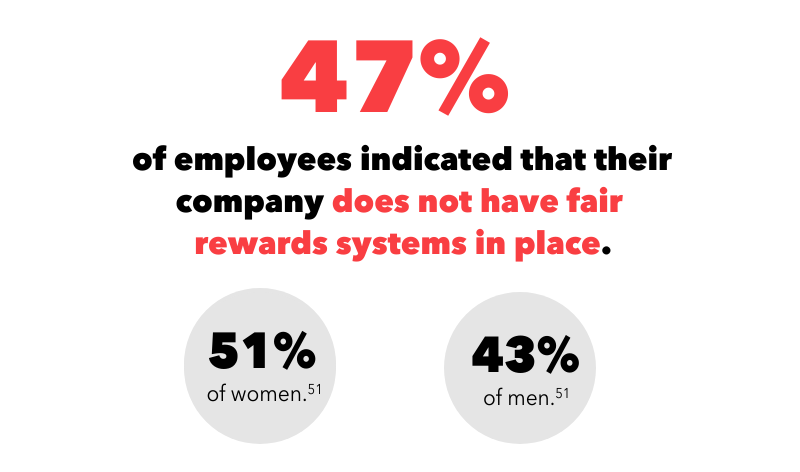
WHAT ACTIONS CAN ORGANIZATIONS TAKE?
- Ensure fair performance evaluations, offer access to pay raises and bonuses.52
- Enhance benefit packages—including for part-time employees—to include paid sick leave, caregiving leave, retirement plans, health insurance, and access to FSAs.53
- Implement systems for managers and leaders to recognize and reward employees and teams formally when they do great work.
- Check out Catalyst’s Supporter-only tool for corporate teams, Window to the Front Line, for more ideas about how to address growth and advancement for frontline employees.
2. Ensure Fair Decision-Making Systems.54
WHAT DOES THIS LOOK LIKE?
- Employees find the decision-making procedures that impact their work to be fair.

WHAT DO EMPLOYEES SAY?
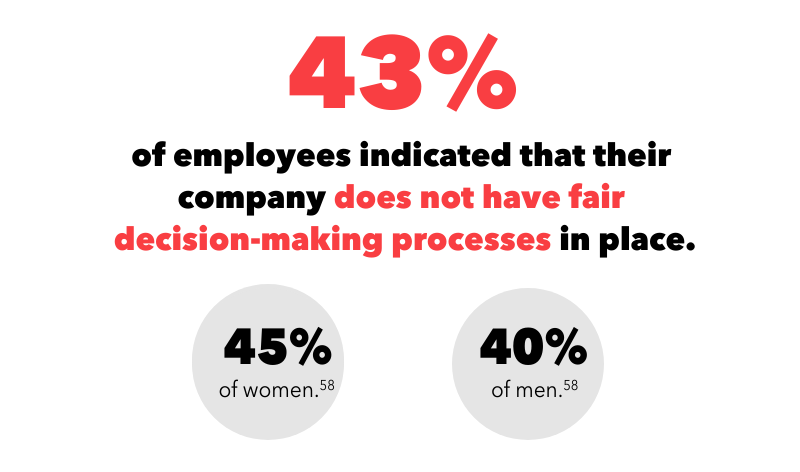
WHAT ACTIONS CAN ORGANIZATIONS TAKE?
- Make sure decision-making processes are consistent, based on accurate information, and provide the opportunity for people impacted to express their concerns or challenge the decisions.
- Create mechanisms to capture the input of frontline employees—who are a deep source of insight since they handle products, customers, and services and run operations on the floor—before decisions are made (for example, related to timing of inventory delivery schedules, production rates, or operational planning).
- Check out the “Break Room” section of Catalyst’s Supporter-only tool for corporate teams, Window to the Front Line, for more ideas about how to gather feedback from frontline employees.
3. Support Employees as Individuals.
WHAT DOES THIS LOOK LIKE?
- Employees perceive that “their organization recognizes their contributions and cares about their well-being.”59
WHY IS IT IMPORTANT?
- Perceived organizational support is correlated with employee performance60 as well as emotional investment in the workplace, which in turn leads to positive behaviors such as knowledge sharing and helping other employees.61
- Perceived organizational support contributes to higher levels of identification with their workplace among employees, which is related to better outcomes such as lower turnover intentions.62

WHAT DO EMPLOYEES SAY?
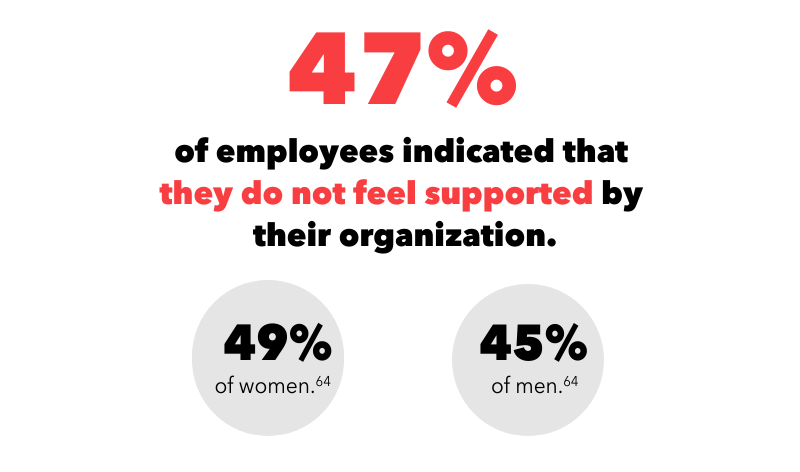
WHAT ACTIONS CAN ORGANIZATIONS TAKE?
- Increase flexibility for employees to control their work schedules and decrease schedule instability.
- Ensure that employees get enough breaks in comfortable spaces.
- Enhance physical conditions at worksites so employees with a range of body types can do their jobs safely and with the facilities they need.65
- Check out Catalyst’s Supporter-only tool for corporate teams, Window to the Front Line, for more ideas about how to support frontline employees’ physical well-being and scheduling issues.
4. Counter a Climate of Silence.
WHAT DOES THIS LOOK LIKE?
- Companies proactively act to dismantle environments in which employees feel restrained from constructively speaking up about organizational or work-related problems, concerns, or challenges because they fear it will be costly in terms of job security and stability.66

WHAT DO EMPLOYEES SAY?
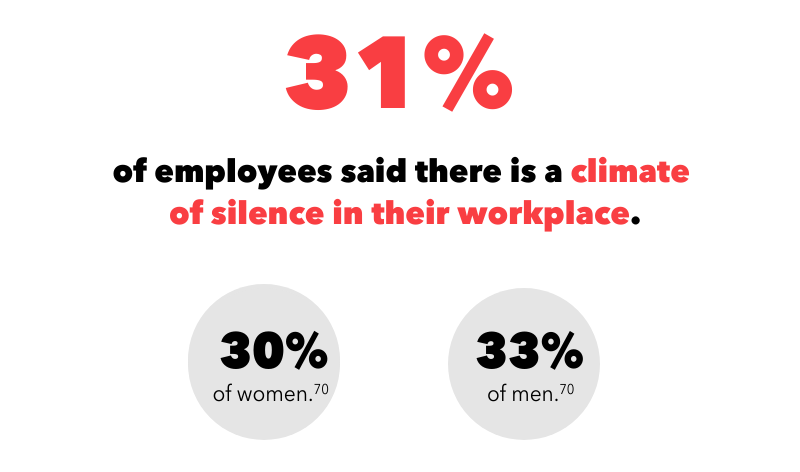
WHAT ACTIONS CAN ORGANIZATIONS TAKE?
- Create mechanisms and incentives for both top-down and bottom-up communications with frontline employees.71
- Demonstrate that all levels of the organization want to hear about problems such as safety concerns, operational inefficiencies, or customer dissatisfaction.72
- Check out the “Take Stock” section of Catalyst’s Supporter-only tool for corporate teams, Window to the Front Line, for more ideas about how to assess frontline employees’ day-to-day experiences.
THE GENDER ANGLE
Closing Fairness Gaps for Women on the Front Line
Women were less likely than men to agree that rewards and decision-making systems were fair. It’s possible that some of this may be related to gender pay gaps (unfair rewards systems) and gender bias (unfair decision-making systems) that remain embedded in compensation and other systems.
- If women perceive they’re being treated differently than men in terms of growth opportunities, workload, or scheduling, they won’t feel that fair decisions are being made.73 Data show that, in terms of promotion rates, it is the “broken rung”—promotion from entry level to manager—where women fare worst in comparison to men.74
- Data also show that women are overrepresented in the lowest-paying roles and men are underrepresented in these roles.75
- In addition, if women know or suspect they’re being paid less than men for the same or similar work, they won’t feel that rewards are distributed fairly. In our sample, women were paid less than men across industries even though they all worked at the same organizational level.
Organizations can address these issues by:
- Auditing hiring, development, and compensation processes to ensure that bias and systemic inequities are eliminated.76
- Conducting periodic pay equity reviews to ensure that people of all genders in the same roles are paid equally.77
- Analyzing employee engagement surveys by gender, and gender with race or other identities, to identify gaps in employee experiences.
- Reviewing any areas in which women are overrepresented and reviewing whether pay rates reflect the true value of their contributions.
- Analyzing pay rates by skill to ensure that employees are paid equally for equal skills no matter their job.
I feel like a female could have the same criteria, [the same] experience and resume, things that would make them more qualified for the job than a man. But a man [will] still get the job and it’ll pay more than they would [pay] to a woman.
—African American woman, 32, retail employee

TAKEAWAY
Organizations Can Make Systemic Change
Frontline employees are often at the bottom of organizational hierarchies and can feel like their needs are neglected:
- Though hourly pay has increased in the past few years,78 it has generally not kept up with inflation and remains low; in our sample, nearly 90% of participants reported hourly wages below the average living wage of $25.02 per hour.79
- Frontline employees don’t always get proper communication from corporate offices about why and how decisions are made and don’t always have access to mechanisms to make their voices heard.
- Catalyst research shows that employees’ personal and professional well-being is not always respected by companies.80
It is, therefore, not surprising that more than two in five frontline employees who participated in this study don’t perceive fair rewards systems, fair decision-making systems, or organizational support, and close to one in three employees perceives a climate of silence.
But these organizational systems have a measurable impact—in addition to the impact that managers have directly—on whether or not employees and managers develop the strong working relationships that drive frontline recruitment and retention.
So it’s incumbent on organizational leaders to take note and prioritize the systemic change that our research shows creates an environment where coworkers are able to trust, support, and uplift one another.
People have to feel valued. They have to feel that you recognize their contribution and they’re being treated with respect.
—Black woman, 55, manufacturing manager
Bonus Reasons for Taking Action
In addition to driving strong team dynamics, these three manager actions and four organizational actions positively affect retention and other employee experiences. Our data showed that higher levels of manager fairness, support, and openness; organizational fair rewards systems, fair decision-making processes, and support of employees; and actions to combat a climate of silence among frontline employees are associated with:81

This shows that there are multiple reasons for organizations to invest in efforts to improve the fairness, support, and openness of their culture.
ITW: Strengthening Culture on the Front Line
For global multi-industrial company ITW, understanding the workplace experiences of colleagues across the globe is critical to maintaining the unique ITW culture. ITW has developed deep knowledge of the employee experience through a series of focus groups and 1:1 interviews with colleagues from the US, EU, and China, including with frontline employees in production and manufacturing direct labor. With this research, ITW learned more about team culture, and the motivations, challenges, and experiences of its decentralized workforce. Key learnings revealed that frontline employees valued the company’s commitment to safety, openness to input from every level, and strong benefits. ITW also learned that frontline employees have strong connections to all values, and “Respect” was rated as the most important and prevalent in day-to-day work.
As a decentralized organization, business units and locations have autonomy to create and implement their own practices for improving team camaraderie and engagement in frontline environments. For example:
- At ITW’s Miller Welding Components division, leadership launched Safety Action Teams as a direct response to feedback received from frontline employees. These groups of four to five employee volunteers meet on a weekly basis to choose which issues need to be addressed and brainstorm solutions. They often work with other team members to engineer a product or tool that increases safety, embodying the team culture of employee involvement and entrepreneurship. In the magnetics department, the Safety Action Team’s innovative employee-led work has helped decrease injuries and turn the department around from what the production manager described as a “revolving door” to somewhere people “want to be and love it.” Because of this success, Safety Action Teams are being expanded to other departments.
- At ITW Shakeproof Automotive locations, Wellness Committees and Champions promoted team culture and physical well-being at the same time by offering several nature walks in which employees were encouraged to bring family members and pets. In several sites they went further by also cleaning up garbage near the location and planting trees.
SUMMARY OF FINDINGS
Most people want to work in an environment where they feel respected, valued, and cared for—by their organization, their supervisor, and their colleagues. In the last several years, many organizations have become much more intentional in how they strengthen relationships and team culture among office employees whether they are remote, hybrid, or fully in person.
But our data show that in frontline environments, this type of team-building is not happening enough. Our data also confirm that adjustments in the amount of fairness, support, and openness that employees experience from both their managers and the larger organization can have important effects on the strength of coworker relationships. With the data presented in this report, companies now have the opportunity to implement concrete actions at both the manager level and the organizational level that have the potential to make a major impact on employees and the bottom line.
The more companies and managers can proactively create the kind of environment where employees feel respected by and enjoy being around their colleagues, the better the results can be, both in recruiting and retention. Strengthening employee relationships at work is a vital investment in people, culture, and workforce development efforts.

Not a Catalyst Supporter?
Fill out the form to receive an exclusive excerpt from Window to the Front Line, a digital toolkit that gives leaders a unique, research-based perspective on experiences for women on the front line.
Methodology
Recruitment and Sample: Participants in this survey were recruited through online panel services. We specifically recruited frontline employees in the United States who were employed in the hospitality, manufacturing, or retail industries, were required to be physically present at their work location, and routinely interacted with coworkers. See Demographics for more information about the sample.
Procedure: After consenting to participate in the survey, respondents viewed one of two possible job descriptions and then indicated their perceptions about the job and the organization. Following this, respondents were asked a series of questions about their experiences in their current job.
Analysis: We employed several statistical analyses to investigate the impact of participants’ relationships with their coworkers on workplace outcomes and to understand the role of managerial and organizational factors in driving the development of coworker relationships. We conducted exploratory factor analysis, linear regression, and logistic regression.
Demographics
| Total # of Respondents | Age | Gender | Industry | Race/Ethnicity | sexual orientation | Education |
| 1,800 |
39 Average age |
49% Women |
42% Retail |
44% Marginalized racial or ethnic group |
17% Identify as lesbian, gay, bisexual, queer, pansexual, or asexual |
2% Less than high school |
| 18-75 Age range |
50% Men |
33% Manufacturing |
56% White |
83% Do not identify as lesbian, gay, bisexual, queer, pansexual, or asexual |
42% High school, GED, or alternative credential |
|
| <2% Trans or nonbinary |
25% Hospitality |
27% Some college |
||||
| 15% Associate degree, Vocational training, or other college certification/diploma |
||||||
| 11% Bachelor’s degree |
||||||
| 2% Master’s degree or higher |
Percentage of Employees Who Agreed:
Acknowledgments
We thank our Frontline Employees Initiative donors for their generous support of our work in this area.
LEAD DONOR

PARTNER DONOR
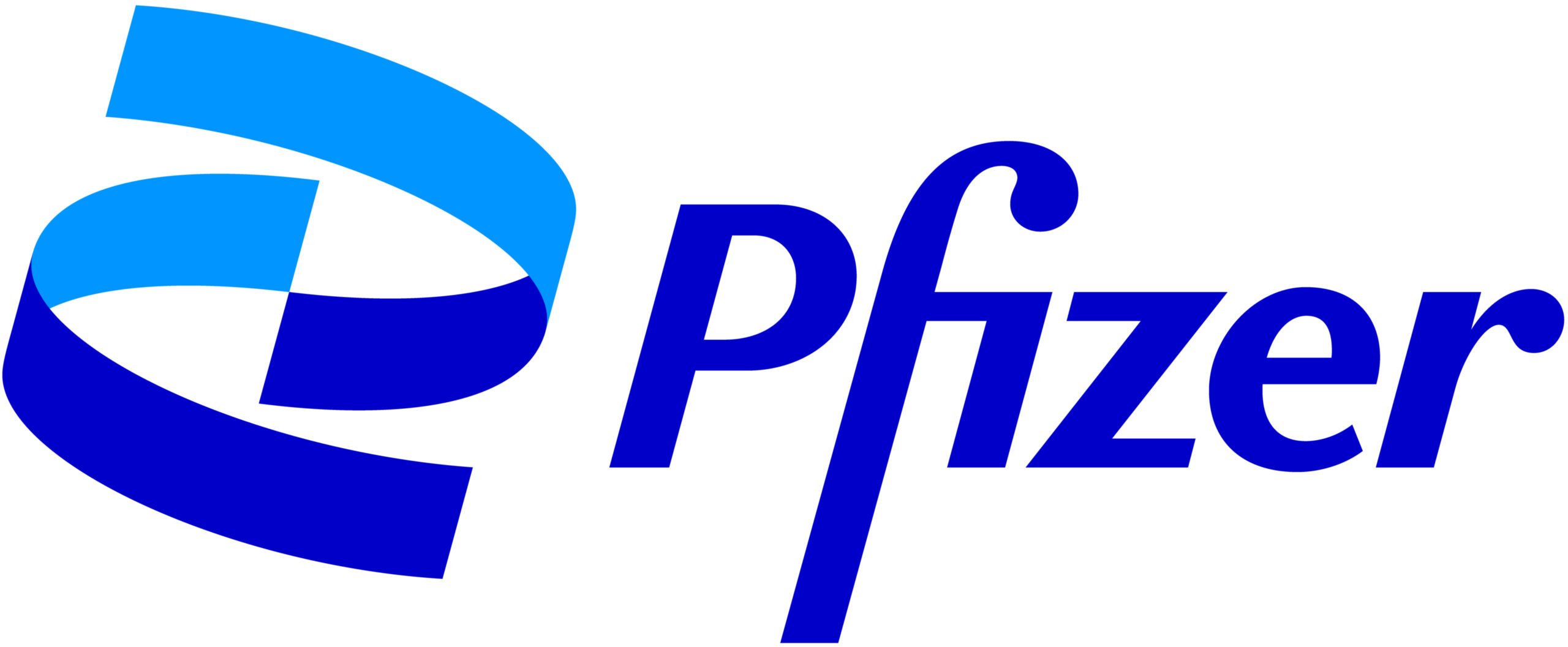
Catalyst is grateful to Accenture for its strong partnership in producing this report.

We thank our Frontline Employees Initiative Board Task Force and Additional Advisors for their collaboration in the development of the Frontline Employees Initiative.
TASK FORCE
Dow
Marriott International
Northrop Grumman
Sodexo
Target Corporation
ADDITIONAL ADVISORS
Chevron
Chobani
The Coca-Cola Company
DICK’S Sporting Goods
Flex
P&G
Pfizer Inc.
Sephora
Zoetis
How to cite: Catalyst & Accenture. (2024). Team dynamics on the front line: How managers and organizations impact this overlooked key to retention. Catalyst.
Endnotes
- Due to the small number of participants who identified as a gender other than “woman” or “man,” in this report, we have only reported differences in views and experiences of women and men.
- “Frontline” is mostly used in the context of “essential” industries and occupations. (See, for example, Tomer, A. & Kane, J. W. (2020, June 10). To protect frontline workers during and after COVID-19, we must define who they are. Brookings.) However, for the purposes of this research and initiative, we are using the term “frontline” more broadly and beyond the scope of what is counted as essential during a time of crisis such as the Covid-19 pandemic. For this research, we focused on the retail, hospitality, and manufacturing industries because an internal analysis of Bureau of Labor Statistics data showed that they are among the industries with highest number of women in frontline roles that fit our definition. (Education and health were not included in the analysis.) In addition, many Catalyst Supporter organizations are part of these industries.
- Each of these industries have unique characteristics, and frontline employees working within them cannot be homogenized. Some frontline positions in manufacturing, for example, provide better pay, benefits, and security (depending on the sector, company size, relations with unions) than service sector jobs, which are often characterized as precarious work (a broad term used to describe working arrangements that are risky, temporary, part-time, insecure, uncertain, often provide low or unreliable wages, and typically lack benefits, rights, and other legal protections). These differences are critical in shaping the experiences of women working in each industry. The goal of this research is not to overlook these differences; what we are focused on is the hierarchical distance between employees and centers of decision making. Our goal is to shine a light on the real-life consequences of company-level policies and practices on the ground.
- The opportunity cost of one unfilled position is $26,599 in Manufacturing, $55,368 in Hospitality, and $46,343 in Retail. Accenture original unpublished analysis based on average of annual job openings between 2018 and 2022, as derived from the Bureau of Labor Statistics, Lightcast, and S&P Global.
- The direct cost of turnover per employee can be as much as $7,246 in Manufacturing, $6,463 in Hospitality, and $6,820 in Retail. Accenture original unpublished analysis based on recruitment efforts costs, training costs, and ramp-up time.
- While job opening levels have cooled in all three industries as compared to their post-pandemic peak, they remain higher than pre-pandemic levels. Despite the high level of job openings, hiring slowed down in 2023, and the quit rates for employees in retail and hospitality are higher than the US average. In addition, in both manufacturing and hospitality, there are more job openings than unemployed people from that industry. Accenture data.
- Accenture original analysis based on Bureau of Labor Statistics data highlights that women comprise 47% of frontline employees in the retail industry and 52% of frontline employees in accommodation and food services. In addition, research on women in the leisure and hospitality sector finds women are typically in lower wage occupations (Fins, A. (2020). Women in leisure and hospitality are among the hardest hit by job losses and most at risk of Covid-19 infection. Fact Sheet. National Women’s Law Centre). US Census Bureau analysis of common retail occupations finds similar trends, for example, that 3 out of 4 cashiers were women and that this occupation group is among the lowest paid retail occupations (Anderson, D. A. & Laughlin, L. (2020). Retail workers: 2018 American Community Survey Reports. ACS-44, United States Census Bureau, 2 & 4).
- Unpublished data from previous qualitative research. To learn about our previous research on women in frontline roles see Catalyst & Accenture. (2023). Women on the front line: Enabling them to thrive, stay, and perform. Catalyst.
- Participants reviewed one of two job postings and then made judgments about their level of interest in the position and impression of the company. Both postings mentioned the need to hire talented candidates in a growing company that offered competitive pay and benefits and a range of schedule options, but only one posting also contained the following text: “It is important to our company that we create positive team environments that give our employees opportunities to connect with their coworkers. We are proud that our employees report that they respect and support one another and recognize colleagues for their efforts and contributions.”
- An independent samples t-test was run to examine the difference in job attraction between employees who viewed the posting with the statement about positive team dynamics and employes who did not view this statement. Job attraction was measured by five items assessing their interest in the role and organization (α = .91) on a 1 (strongly disagree) to 6 (strongly agree) scale, and the items were then averaged to form a composite. The mean for employees who read the job description containing the statement about positive team dynamics (Job A) (M = 4.37) was significantly higher than the mean for employees who read the job description that did not contain this information (Job B) (M = 4.25), t(1798) = 2.53, p = .011.
- An independent samples t-test was run to examine the difference in impressions of the organization between employees who viewed the posting with the statement about positive team dynamics and employes who did not view this statement. Positive impressions of the organization was measured by three items assessing their perception of the organization’s care for worker well-being (α = .86) on a 1 (strongly disagree) to 6 (strongly agree) scale. The mean for employees who viewed the job description containing the statement about positive team dynamics (Job A; M = 4.52) was significantly higher than the mean for employees who viewed the job description that did not contain this statement (Job B; M = 4.29), t(1798) = 5.07, p < .001.
- Job attraction was dichotomized such that scores greater than or equal to 4 indicated higher attraction and scores lower than 4 indicated lower attraction. A chi-square test of independence found that there was a significant difference in the percentage of employees who indicated they were attracted to Job A (which included information about positive team dynamics; 74.3%) compared to those who indicated they were attracted to Job B (which did not include information about positive team dynamics; 67.8%), Χ2 (1, N = 1800) = 8.94, p = .003. In addition, perception of the organization was dichotomized such that scores greater than or equal to 4 indicated more positive impressions of the organization, whereas scores lower than 4 indicated less positive impressions of the organization. A chi-square test of independence found that there was a significant difference in the percentage of employees who indicated they had a positive impression of the organization in job A (82.8%) compared to the percentage of employees who had positive impressions of the organization in Job B (74.4%), Χ2 (1, N = 1800) = 18.54, p < .001.
- Unpublished data from previous qualitative research. To learn about our previous research on women in frontline roles see Catalyst & Accenture. (2023). Women on the front line: Enabling them to thrive, stay, and perform. Catalyst.
- All quotations cited in this report are derived from qualitative research undertaken by Catalyst and discussed in Catalyst & Accenture. (2023). Women on the front line: Enabling them to thrive, stay, and perform. Catalyst. Interview participants were asked to self-identify their race and/or ethnicity. Participants of the diary study had the option to self-identify or select their race and/or ethnicity from a provided list.
- A logistic regression was conducted to examine how positive team dynamics shape organizational commitment. Organizational commitment was measured by 4 items on a 1 (strongly disagree) to 6 (strongly agree) scale. Responses to the 4 items were then averaged to form a composite (α = .91) and then dichotomized such that scores greater than or equal to 4 indicated more organizational commitment, whereas scores below 4 indicated less organizational commitment. The logistic regression was statistically significant: X2 (1) = 354.75, p < .001, Nagelkerke R Square = .24. As positive team dynamics increased by one unit, employees were 3 times more likely to report high organizational commitment, b = 1.12, Exp(B) = 3.06, [LLCI = 2.68; ULCI = 3.51], p < .001.
- A logistic regression was conducted to examine how positive team dynamics shape work engagement. Work engagement was measured by 5 items on a 1 (strongly disagree) to 6 (strongly agree) scale. Responses to these items were then averaged to create a composite (α = .92) and then dichotomized such that scores greater than or equal to 4 indicated more work engagement and scores below 4 indicated less work engagement. The logistic regression was statistically significant: X2 (1) = 357.71, p < .001, Nagelkerke R Square = .25. As positive team dynamics increase, employees were 3 times more likely to report high work engagement, b = 1.16, Exp(B) = 3.17, [LLCI = 2.76; ULCI = 3.65], p < .001.
- A logistic regression was conducted to examine how the quality of coworker relationships shapes job satisfaction. Job satisfaction was measured by one item in which participants indicated the degree to which they were satisfied with their current job on a 1 (very dissatisfied) to 6 (very satisfied) scale. Job satisfaction was then dichotomized such that responses of 4 or higher indicated more satisfaction and scores 3 or below indicated less satisfaction. The logistic regression was statistically significant: X2 (1) = 222.78, p < .001, Nagelkerke R Square = .17. As positive team dynamics increased, employees were 2.5 times more likely to report high job satisfaction, b = 0.89, Exp(B) = 2.45, [LLCI = 2.16; ULCI = 2.79], p < .001.
- A logistic regression was conducted to examine how positive team dynamics shape intentions to leave. Positive team dynamics was measured by 13 items assessing coworker respect, recognition, support, and connectedness behaviors (α = .96) on a 1 (strongly disagree) to 6 (strongly agree) scale, and these items were averaged to create a composite measure of team dynamics. Intentions to leave was measured by 3 items (α = .87) on a 1 (strongly disagree) to 6 (strongly agree) scale and averaged to create a composite (α = .87). Intentions to leave was then dichotomized such that scores greater than or equal to 4 indicated more intentions to leave, whereas scores lower than 4 indicated less intentions to leave. The logistic regression was statistically significant: X2 (1) = 48.58, p < .001, Nagelkerke R Square = .04. As positive team dynamics increased by one unit, employees were 30% less likely to report intentions to leave, b = -0.36, Exp(B) = 0.70, [LLCI = .63; ULCI = .77], p < .001.
- A logistic regression was conducted to examine how positive team dynamics shape experiences of burnout. Burnout was measured by one item in which participants were asked to indicate their agreement to the following statement, “I am burnt out because of factors in my workplace.” Participants could respond on a 1 (strongly disagree) to 6 (strongly agree) scale. Burnout was then dichotomized such that responses or 4 or higher indicated more burnout, whereas responses 3 or below indicated less burnout. The logistic regression was statistically significant: X2 (1) = 77.25, p < .001, Nagelkerke R Square = .06. As positive team dynamics increased by one unit, employees were 37% less likely to report feelings of burnout, b = -0.46, Exp(B) = 0.63, [LLCI = .57; ULCI = .70], p < .001.
- A logistic regression was conducted to examine how opportunities to connect with coworkers shape positive team dynamics. Opportunities to connect with coworkers was measured by 5 items. Participants were asked to indicate the frequency with which they were able to celebrate team achievements and have team lunches and social events on a 1 (never) to 6 (very frequently). Responses were then averaged to create a composite (α = .84). Positive team dynamics was then dichotomized such that scores greater than or equal to 4 indicated more positive team dynamics and scores less than 4 indicated less positive team dynamics. The logistic regression was statistically significant: X2 (1) =66.16, p < .001, Nagelkerke R Square = 0.21. As opportunities to connect increased by one unit, employees were 2.4 times more likely to report more positive team dynamics, b = 0.86, Exp(B) = 2.37, [LLCI = 1.89; ULCI = 2.98], p < .001.
- Hassan, F. (2011, May). The frontline advantage. Harvard Business Review.
- Workday/Lighthouse Research & Advisory. (2022). Frontline workers: How to connect, enable, and support them in the modern workplace, 10. Workday.
- To examine the associations between the positive manager behaviors and positive coworker relationships, we conducted a linear regression. Positive manager behaviors were measured by averaging scores from three sub-scales assessing manager behaviors (manager fairness, manager openness, and manager support; α = .91) on a 1 (strongly disagree) to 6 (strongly agree) scale. The more employees reported positive manager relationships the more positive team dynamics they reported, R2 = .29, b = .48, t(1799) = 27.36, p < .001.
- Kerns, D. (2019). Managing teamwork: A key leadership practice. Journal of Leadership, Accountability and Ethics, 16(1).
- Helping behaviors refer to “any untasked duty that an employee offers to enable coworkers to fulfill their duties in the organization’s interest.” Wang, W. & Ahoto, A. T. (2022). Influence of supervisors’ fairness on work climate, job satisfaction, task performance, and helping behavior of health workers during Covid-19 outbreak. Frontiers in Psychology, 13.
- Catalyst & Accenture. (2023). Women on the front line: Enabling them to thrive, stay, and perform. Catalyst.
- A logistic regression was conducted to examine how manager fairness shapes positive team dynamics. Manager fairness was adapted from Masterson, S. S. (2001). A trickle-down model of organizational justice: Relating employees’ and customers’ perceptions of and reactions to fairness. Journal of Applied Psychology, 86(4), 596, and was measured by 7 items assessing employees’ perceptions of how fair and consistent their manager is. Respondents indicated their agreement on a 1 (strongly disagree) to 6 (strongly agree) scale. The responses were then averaged to create a composite (α = .85). The logistic regression was statistically significant: X2 (1) = 243.60, p < .001, Nagelkerke R Square = .20. As employee perceptions of manager fairness increase by one unit, employees were2.2 times more likely to report more positive team dynamics, b = 0.77, Exp(B) = 2.16, [LLCI = 1.95; ULCI = 2.40], p < .001.
- An independent samples t-test was conducted to test whether there was a significant difference between women and men who said their manager was fair. Men (M = 4.17) reported that their manager was significantly more fair than did women (M = 4.01), t(1767) = -2.86, p = .004.
- Catalyst & Accenture. (2023). Women on the front line: Enabling them to thrive, stay, and perform. Catalyst.
- Karatepe, O. M. & Kilic, H. (2007). Relationships of supervisor support and conflicts in the work-family interface with the selected job outcomes of frontline employees. Tourism Management, 28(1), 238-252.
- American Psychological Association. (2017). Supervisor support critical to employee well-being and workforce readiness; Kalliath, P., Kalliath, T., Chan, X. W., & Chan, C. (2020). Enhancing job satisfaction through work-family enrichment and perceived supervisor support: The case of Australian social workers. Personnel Review, 49(9), 2055-2072.
- A logistic regression was conducted to examine how manager support shapes positive team dynamics. Manager support was measured by 10 items from Swanberg, J. E., McKechnie, S. P., Ojha, M. U., & James, J. B. (2011). Schedule control, supervisor support and work engagement: A winning combination for workers in hourly jobs? Journal of Vocational Behavior, 79(3), 613, and measured on a 1 (strongly disagree) to 6 (strongly agree) scale. Responses were then averaged to create a composite (α = .94). The logistic regression was statistically significant: X2 (1) = 326.17, p < .001, Nagelkerke R Square = .26. As manager support increased by 1 unit, employees were 2.7 times more likely to report more positive team dynamics, b = 1.00, Exp(B) = 2.71, [LLCI = 2.40; ULCI = 3.06],
p < .001. - An independent samples t-test was conducted to test whether there was a significant difference between women and men who said their manager was supportive. There was not a significant difference in manager support between men (M = 4.40) and women (M = 4.34), t(1767) = -1.04, p = .30.
- Van Bommel, T. (2021). The power of empathy in times of crisis and beyond. Catalyst.
- Sattari, N., DiMuccio, S., & Gabriele, L. (2021). When managers are open, men feel heard and interrupt sexism. Catalyst.
- Brassel, S., Van Bommel, T., & Robotham, K. (2022). Three inclusive team norms that drive success. Catalyst.
- A logistic regression was conducted to examine how manager openness shapes relationships with coworkers. Manager openness was measured by 3 items from Detert, J. R., & Burris, E. R. (2007). Leadership behavior and employee voice: Is the door really open? Academy of Management Journal, 50(4), 869–884, and measured on a 1 (strongly disagree) to 6 (strongly agree) scale. Responses were then averaged to create a composite (α = .87). The logistic regression was statistically significant: X2 (1) = 236.81, p < .001, Nagelkerke R Square = .19. As perceptions of manager openness increases by 1 unit, employees were 2.2 times more likely to report more positive team dynamics, b = 0.76, Exp(B) = 2.15, [LLCI = 1.93; ULCI = 2.38], p < .001.
- An independent samples t-test was conducted to test whether there was a significant difference between women and men who said their manager was open. Men (M = 4.32) reported that their manager was significantly more open than did women (M = 4.19), t(1767) = -2.33, p = .02.
- Accenture original analysis based on Bureau of Labor Statistics data highlights that women comprise 47% of frontline employees in the retail industry and 52% of frontline employees in accommodation and food services.
- See for example, Deloitte and Manufacturing Institute. (n.d.). Beyond reskilling: Manufacturing’s future depends on diversity, equity, and inclusion. See also the Manufacturing Institute’s Women MAKE America Initiative, which has a goal of increasing women’s participation in the industry to 35% by 2030.
- Achievers Workforce Institute. (2023). The foundations of manager effectiveness: Empowering people leaders in the new world of work. (2023). Achievers Workforce Institute.
- Dhar, J. et al. (2022, July 7). Why deskless workers are leaving and how to win them back. BCG.
- Belcher, D. (March 31, 2023). Frontline leaders are hungry for development. Can organizations deliver? Leading the Way—Harvard Business Publishing Corporate Development Blog.
- Belcher, D. (March 31, 2023). Frontline leaders are hungry for development. Can organizations deliver? Leading the Way—Harvard Business Publishing Corporate Development Blog.
- Catalyst & Accenture. (2023). Women on the front line: Enabling them to thrive, stay, and perform. Catalyst; Deskless not voiceless: The 2021 frontline barometer. (2021). Workplace from Meta.
- In the academic literature this concept is more commonly referred to as “distributive justice” see for example, Masterson, S. S. (2001). A trickle-down model of organizational justice: Relating employees’ and customers’ perceptions of and reactions to fairness. Journal of Applied Psychology, 86(4), 596.
- In our survey, we asked participants about their perceptions of work rewards generally. Rewards can be tangible (e.g., pay, benefits, bonuses) or intangible (e.g., verbal appreciation).
- Forret, M. & Love, M. S. (2008). Employee justice perceptions and coworker relationships. Leadership and Organizational Development Journal, 29(3).
- Cenkci, A. T. & Otken, A. B. (2019). Linking employee dissent to work engagement: Distributive justice as a moderator. Institute of Behavioral and Applied Management, 19(1).
- A logistic regression was conducted to examine how perceptions of fair reward systems shape positive team dynamics. Perceptions of fair reward systems were measured by 4 items adapted from the distributive justice scale from Masterson, S. S. (2001). A trickle-down model of organizational justice: Relating employees’ and customers’ perceptions of and reactions to fairness. Journal of Applied Psychology, 86(4), 596, and measured on a 1 (strongly disagree) to 6 (strongly agree) scale. Responses were then averaged to create a composite (α = .91). The logistic regression was statistically significant: X2 (1) = 177.77, p < .001, Nagelkerke R Square = .15. As perceptions of fair reward systems increase by 1 unit, employees are 1.8 times more likely to report more positive team dynamics, b = 0.60, Exp(B) = 1.82, [LLCI = 1.66; ULCI = 2.00], p < .001.
- An independent samples t-test was conducted to test whether there was a significant difference between women and men who said their organization had fair rewards systems. Men (M = 3.90) reported that their organizations had fair reward systems in place more so than women (M = 3.68), t(1767) = -3.55, p < .001.
- In December 2023, the average hourly wage for production or non-supervisory roles in Retail, Leisure and Hospitality, and Manufacturing was reported as $20.83, $19.24, and $27.16 respectively. Bureau of Labor Statistics. (January 5, 2024). Table B-8. Average hourly and weekly earnings of production and nonsupervisory employees on private nonfarm payrolls by industry sector, seasonally adjusted.
- Research on target industries highlights that frontline employees often have limited or no access to benefits such as paid sick leave, see for example Schneider, D. & Harknett, K. (2020). Essential and vulnerable: Service sector workers and paid sick leave. The Shift Project Brief. Harvard Kennedy School. Research also finds that frontline employees highly rate access to benefits, see for example Watts, T. & Umland, B. (2021). Benefits matter to low-wage workers. Mercer.
- In the academic literature this concept is more commonly referred to as “procedural justice;” see for example Kim, M. & Beehr, T. A. (2020). Making the case for procedural justice: employees thrive and work hard. Journal of Managerial Psychology, 35(2), 100-114.
- Moorman, R., Blakely, G., & Niehoff, B. (1998). Does perceived organizational support mediate the relationship between procedural justice and organizational citizenship behavior? Academy of Management Journal, 41(3), 351-357.
- Kim, M. & Beehr, T. (2020). Making the case for procedural justice: Employees thrive and work hard. Journal of Managerial Psychology, 35(2) 100-114.
- A logistic regression was conducted to examine how fair decision-making processes shape positive team dynamics. Fair decision-making processes was measured by 6 items adapted from the procedural justice scale from Masterson, S. S. (2001). A trickle-down model of organizational justice: Relating employees’ and customers’ perceptions of and reactions to fairness. Journal of Applied Psychology, 86(4), 596, and measured on a 1 (strongly disagree) to 6 (strongly agree) scale. Responses were then averaged to create a composite (α = .91). The logistic regression was statistically significant: X2 (1) = 257.74, p < .001, Nagelkerke R Square = .21. As perceptions of fair decision-making processes increased by 1 unit, employees were 2.4 times more likely to report more positive team dynamics, b = 0.86, Exp(B) = 2.36, [LLCI = 2.11; ULCI = 2.65], p < .001.
- An independent samples t-test was conducted to test whether there was a significant difference between women and men who said their organization had fair decision-making processes. Men (M = 4.02) reported that their organizations had fair decision-making processes in place more so than women (M = 3.91), t(1767) = -2.05, p = .04.
- Eisenberger, R., Cummings, J., Armeli, S., & Lynch, P. (1997). Perceived organizational support, discretionary treatment, and job satisfaction. The Journal of Applied Psychology, 82(5), 812.
- Darolia, C. R., Kumari, P., & Darolia, S. (2010). Perceived organizational support, work motivation, and organizational commitment as determinants of job performance. Journal of the Indian Academy of Applied Psychology, 36(1), 69-78.
- Ficapal-Cusí, P., Enache-Zegheru, M., & Torrent-Sellens, J. (2020). Linking perceived organizational support, affective commitment, and knowledge sharing with prosocial organizational behavior of altruism and civic virtue. Sustainability, 12(24), Article 24; Pohl, S., Battistelli. A, & Librecht, J. (2013). The impact of perceived organizational support and job characteristics on nurses’ citizenship behaviours. International Journal of Organization Theory and Behavior, 16(2) 203.
- Shen, Y. et al. (2014). Linking perceived organizational support with employee work outcomes in a Chinese context: Organizational identification as a mediator. European Management Journal, 32(3), 406–412.
- A logistic regression was conducted to examine how organizational support shapes positive team dynamics. Organizational support was measured by 8 items from Eisenberger, R., Cummings, J., Armeli, S., & Lynch, P. (1997). Perceived organizational support, discretionary treatment, and job satisfaction. The Journal of Applied Psychology, 82(5), 812, and measured on a 1 (strongly disagree) to 6 (strongly agree) scale. Responses were then averaged to create a composite (α = .70). The logistic regression was statistically significant: X2 (1) = 275.32, p < .001, Nagelkerke R Square = .22. As organizational support increased by 1 unit, employees were 2.6 times more likely to report better relationships with coworkers, b = 0.95, Exp(B) = 2.59, [LLCI = 2.29; ULCI = 2.93], p < .001.
- An independent samples t-test was conducted to test whether there was a significant difference between women and men who said their organization was supportive. Men (M = 3.93) and women (M = 3.88) did not report differences in organizational support, t (1767) = -0.92, p > .05.
- Catalyst & Accenture. (2023). Women on the front line: Enabling them to thrive, stay, and perform. Catalyst.
- Sattari, N., Shaffer, E., DiMuccio, S., & Travis, D. J. (2020). Interrupting sexism at work: What drives men to respond directly or do nothing? Catalyst.
- Vakola, M. & Bouradas, D. (2005). Antecedents and consequences of organisational silence: An empirical investigation. Employee Relations, 27, 441–458.
- Sattari, N., Shaffer, E., DiMuccio, S., & Travis, D. J. (2020). Interrupting sexism at work: What drives men to respond directly or do nothing? Catalyst.
- A logistic regression was conducted to examine how organizational climate of silence shapes positive team dynamics. Climate of silence was measured by 8 items from Daşcı, E. & Cemaloğlu, N. (2016). The development of the organizational silence scale: Validity-reliability study. Journal of Human Sciences, 13(1), 33-45, and measured on a 1 (strongly disagree) to 6 (strongly agree) scale. Responses were then averaged to create a composite (α = .92). The logistic regression was statistically significant: X2 (1) = 94.89, p < .001, Nagelkerke R Square = .08. As perceptions of organizational silence increased by 1 unit, employees were 37% less likely to report better relationships with coworkers, b = -0.47, Exp(B) = 0.63, [LLCI = 0.57; ULCI = 0.69], p < .001.
- An independent samples t-test was conducted to test whether there was a significant difference between women and men who said there was a climate of silence within their organization. Men (M = 3.27) and women (M = 3.19) did not report differences in a climate of silence, t(1767) = -1.49, p = .14.
- Deskless not voiceless: A new approach to connecting everyone within your business. (n.d.). Workplace from Meta.
- Anderson, G. (2021, November 12). Frontline workers say management isn’t listening to them. RetailWire; Dickson, G. (2022, February 15). Why frontline worker communication is more important (and easier) than ever. Haystack.
- Hegewisch, A. & Mefferd, E. (2021). A future worth building: What tradeswomen say about the change they need in the construction industry. Institute for Women’s Policy Research.
- Leanin.Org & McKinsey. (2023). Women in the workplace 2023. McKinsey.
- Tucker, J. & Patrick, K. (2017). Low-wage jobs are women’s jobs: The overrepresentation of women in low-wage work. National Women’s Law Center.
- Break the cycle: Eliminating gender bias in talent management systems. (2018). Catalyst.
- Aligning actions to values: The Catalyst CEO Champions For Change. (2023). Catalyst.
- Casselman, B. & DePillis, L. (2023, August 23). In a hot job market, the minimum wage becomes an afterthought. The New York Times.
- Glasmeier, A. (2023, February 17). The difference between a living wage and minimum wage. DUSP MIT.
- Catalyst & Accenture. (2023). Women on the front line: Enabling them to thrive, stay, and perform. Catalyst.
- To create a composite of positive manager actions, we averaged scores on manager fairness, openness, and support (α = .91). We also created a composite of positive organizational actions by averaging scores on organizational fair rewards systems, fair decision-making processes, and support of employees (α = .82). There was a significant correlation between positive manager actions and work satisfaction (r = .59, p <.001), work engagement (r = .61, p < .001), organizational commitment (r = .66, p < .001), intent to leave (r = -.37, p < .001), and burnout (r = -.36, p < .001). Additionally, there was a significant correlation between positive organizational actions and work satisfaction (r = .64, p < .001), work engagement (r = .64, p < .001), organizational commitment (r = .72, p < .001), intent to leave (r = -.52, p < .001), and burnout (r = -.50, p < .001).